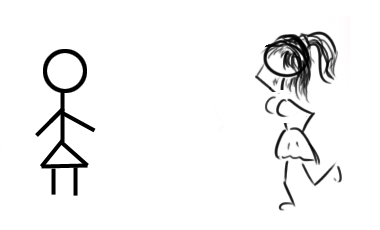I’ve been asked a few times now what I think about the app store. Never before has a feature scored terrific, average, and awful all at the same time for me. Here’s the break down.
What’s Terrific
Apple has made the integration as sweet and easy as System Update, with a trivial installation process that just works universally.
But that’s not the part that has me whistling Dixie — it’s that applications no longer use serial numbers nor do they phone home, instead they use cryptography. Nothing to pollute your network traffic. No software failing validation checks on a plane unable to reach a server.
And, given that I can now run software I paid for on machines owned by me, that’s a big win.
Plus, it unifies the Apple-culture a bit more in that upgrades work the way you expect: you don’t have to always reach for your wallet or buy stupid subscriptions.
What’s Average
The user interface, while simple, still isn’t hammered out in that perfect design that ever-so-well fits the problem space that Apple’s known for. For instance, under certain circumstances, buttons don’t behave the same way potentially causing one to purchase an unexpected item.
The store is missing a CONFIRM button before purchases, a CANCEL button as it’s happening, and more importantly a RETURN UNOPENED if it gets to the doc.
Many apps that have been acquired from other means don’t show up as INSTALLED, making for a very bumpy upgrade path. Others work just fine. Hopefully that will stabilize in the future.
What’s Awful
Some apps are dumbed down in terms of functional restrictions of the features we know and love due to Apple’s Terms of Use. There’s also fears of rejections by Apple, in addition to dealing with the approval process that still doesn’t feel completely worked out or entirely equitable between similar applications or that could be considered competitive.
Browsing the App Store, one notices the gross lack of a Genius mode.
Plus, while there are supposed to be a bazillion apps out there already, only a small handful appear to be browseable. This raises concerns that a popular app may drown out a cheaper and better competitor. Hopefully there will be more ways to slice and dice the browsing experience.
However, two major complaints are still outstanding and pretty valid.
One is that most of the apps on the App Store are crap — the easy distribution mechanism has flooded the market with apps of low interest of quality. It’s like when everyone published a flashlight app for the iPhone, and iFart was the talk of the town. For the historically minded, it was like when Atari opened its console system, and while it had the most game, only a handful were worth playing. Hopefully the rating system will help this problem. In the meanwhile, each ugly app drags the reputation of the App Store down a notch; unless the ratio reverses, the App Store will take on the same appeal as a yard sale.
Two is that many of the apps are priced in ways that don’t make a lot of sense. Someone produces a fantastic game, and it’s a dollar or less. Someone else produces a horrible looking monstrosity and charges $19.95 for it. The costs don’t reflect the features or quality. And, while good in the short term, and just the short term, we may see a plunge much the way that most iPhone apps cost 99 cents.

